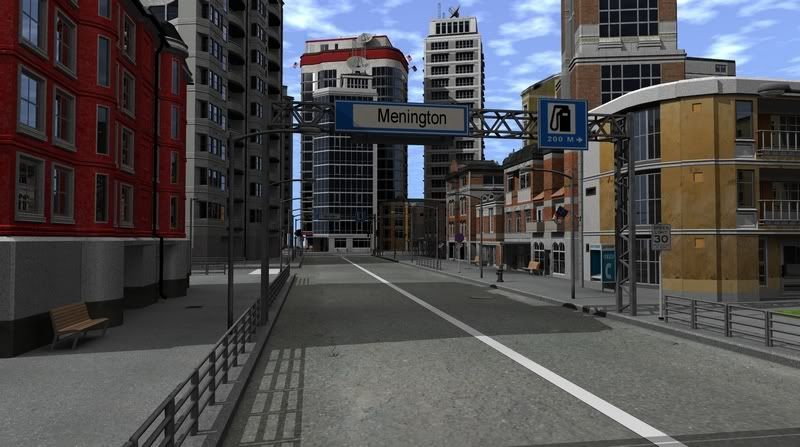You are using an out of date browser. It may not display this or other websites correctly.
You should upgrade or use an alternative browser.
You should upgrade or use an alternative browser.
In terms of rendering power what would Cell be equal to?
- Thread starter almighty
- Start date
Well, as it had to emulate all the texture processing and filtering stuff, it'd already slow down a lot. Those texture caches are far more optimized for the task then the memory system of the Cell; and all the small hardwired ALUs take a lot of FLOPS away from vertex and pixel shading.
Then there's a lot more fixed function logic in GPUs for stuff that's small in itself but it'd keep the SPEs busy for many, many cycles too.
In the end though, I don't have a clue...
Then there's a lot more fixed function logic in GPUs for stuff that's small in itself but it'd keep the SPEs busy for many, many cycles too.
In the end though, I don't have a clue...
Megadrive1988
Veteran
I could be wrong, but it seems that one Cell Processor with 7 working SPEs @ 3.2 GHz would probably not be able to match GeForce 4 Ti or Radeon 8500, or even a GeForce 3.
so were probably talking about performance comparable to GPUs from 2000
(GeForce 2 GTS, original Radeon, GeForce 2 Ultra).
so were probably talking about performance comparable to GPUs from 2000
(GeForce 2 GTS, original Radeon, GeForce 2 Ultra).
icecold1983
Banned
http://www.gametomorrow.com/minor/barry/city_iRT.mov
showing off the cells rendering power of the cell. i dont remember any old gpus ever pushing graphics like that.
showing off the cells rendering power of the cell. i dont remember any old gpus ever pushing graphics like that.
Uh, we've already seen demonstrations of what CELLs can do when dedicated to graphics functions, quite a bit. Just dig around here a bit and you should be able to find something visual to help with the assessment.
Just a little info before I run for the evening - The IRT demo (Raytracing) that's been shown numerous times at the link below, is being prepped for a demonstration on a single PS3 CELL sometime soon. That should give atleast a decent idea as to where it sits in this regard.
http://gametomorrow.com/blog/index.php/category/cell/
Just a little info before I run for the evening - The IRT demo (Raytracing) that's been shown numerous times at the link below, is being prepped for a demonstration on a single PS3 CELL sometime soon. That should give atleast a decent idea as to where it sits in this regard.
http://gametomorrow.com/blog/index.php/category/cell/
Megadrive1988
Veteran
http://www.gametomorrow.com/minor/barry/city_iRT.mov
showing off the cells rendering power of the cell. i dont remember any old gpus ever pushing graphics like that.
Yes but not one or 2 cells but multiple Cells to render that scene at 30fps with mediocre quality (shadows/aa/reflections and more).
Comment by the one who made the test.
"Comment by Barry Minor — March 10, 2007 @ 1:29 am
KapN, Each PS3 only has 6 SPEs available under Linux so at 1080p resolution it would take around 15 PS3s to render this scene at 30 fps."
http://gametomorrow.com/blog/index.php/2007/03/07/cell-power-at-gdc-2007
http://www.gametomorrow.com/minor/barry/city_1080p.jpg

icecold1983
Banned
didnt realize it was so many cells rendering that, i stand corrected. however the quality looks fine. the assets arent high quality but the aa/af/shadows look high quality to me.
didnt realize it was so many cells rendering that, i stand corrected. however the quality looks fine. the assets arent high quality but the aa/af/shadows look high quality to me.
Shadows have hard edges all over the place and unless the jpg is compressed in LQ mode then aliasing can be seen on building borders, object inner outer lines.
icecold1983
Banned
u must think all pc games have low quality graphics than.
u must think all pc games have low quality graphics than.
Umm if directed to me then no. We are talking about renderer (iRT for PS3) and on PC there are 3Dsmax 9.0, XSI 6.0, and more. If you set to use HQ in 3Dsmax 9 when rendering your scene you will get soft shadows with different shade tones. Also HQ aa is added to the scene in 3Dsmax 9 (if enabled) amongst other things to get a HQ image.
icecold1983
Banned
i thought u were talking about bad as compared to current games. not offline rendering.
TheChosenOne
Newcomer
To be fair, that demo is using a ray tracing engine... and not standard rasterization.
When using your typical rasterization engine I would guess that the cell in the Playstation 3 could pump out near Geforce 3 level graphics. But then again, I don't know too much about rendering or programming.
When using your typical rasterization engine I would guess that the cell in the Playstation 3 could pump out near Geforce 3 level graphics. But then again, I don't know too much about rendering or programming.
15 CELLs to render that?
The PowerVR chip in Dreamcast could render that with modifier volume shadows...and no I'm NOT kidding.
It probably could, but it does so through a different method (As you pointed out). What could CELL do with this scene if it were using the same kind of technique? Further, what could the PVR2DC do with it, were the case reversed? Could it even be made to function so?
icecold1983
Banned
that scene is 3 mil polys per frame. thats way beyond what the dcs gpu could push.
Similar threads
- Replies
- 26
- Views
- 3K
- Replies
- 7
- Views
- 2K
- Replies
- 21
- Views
- 9K
- Replies
- 0
- Views
- 422
